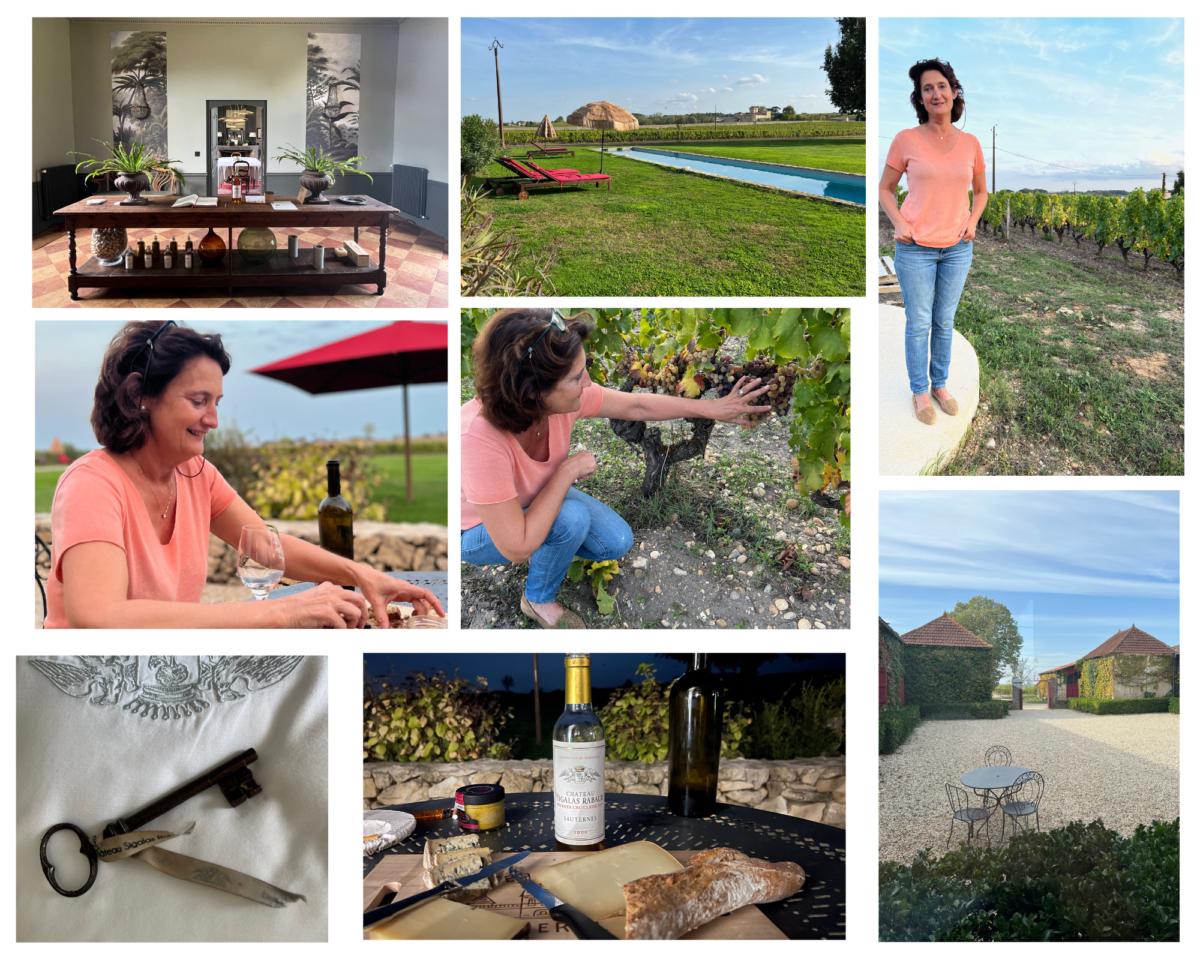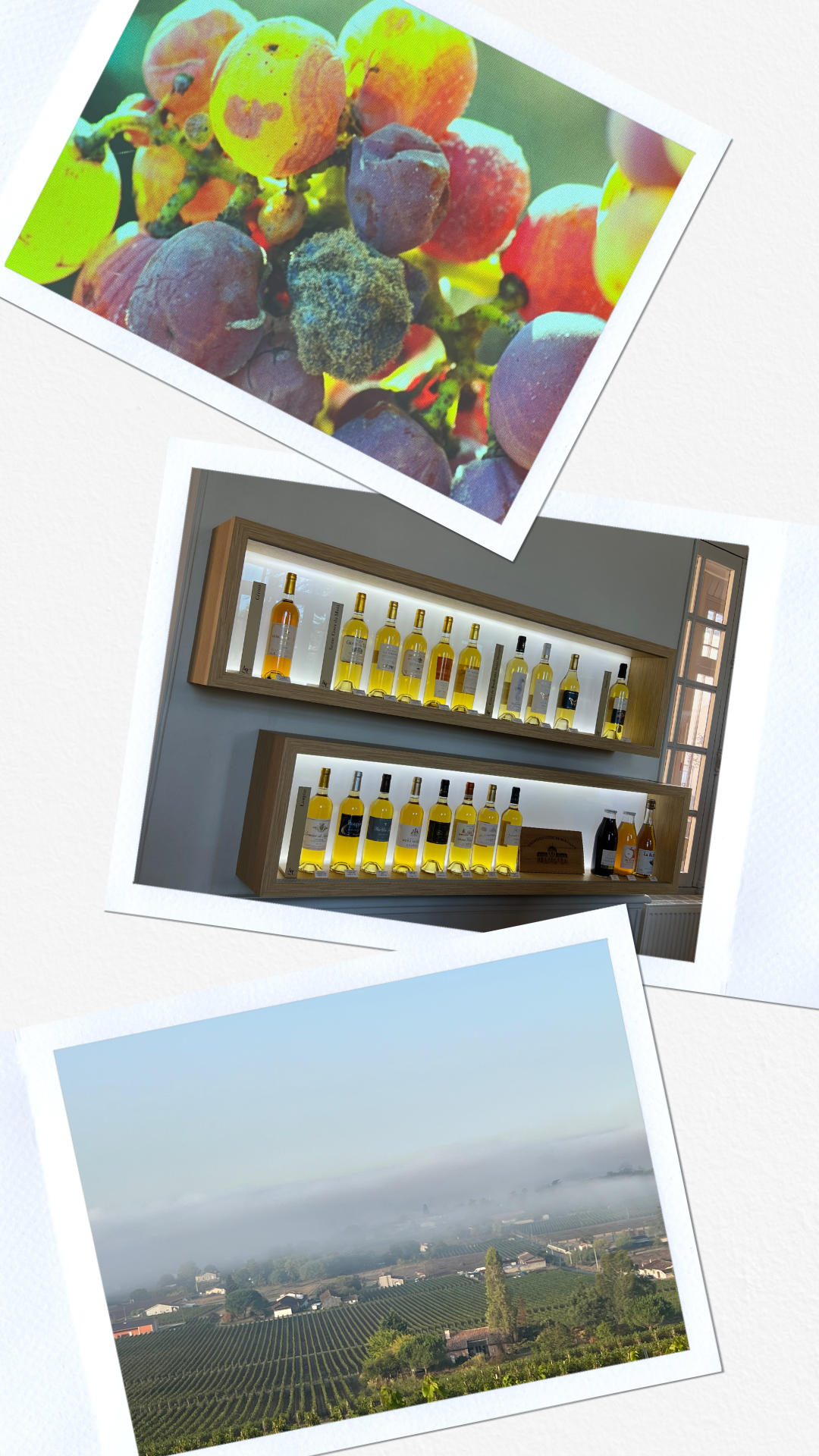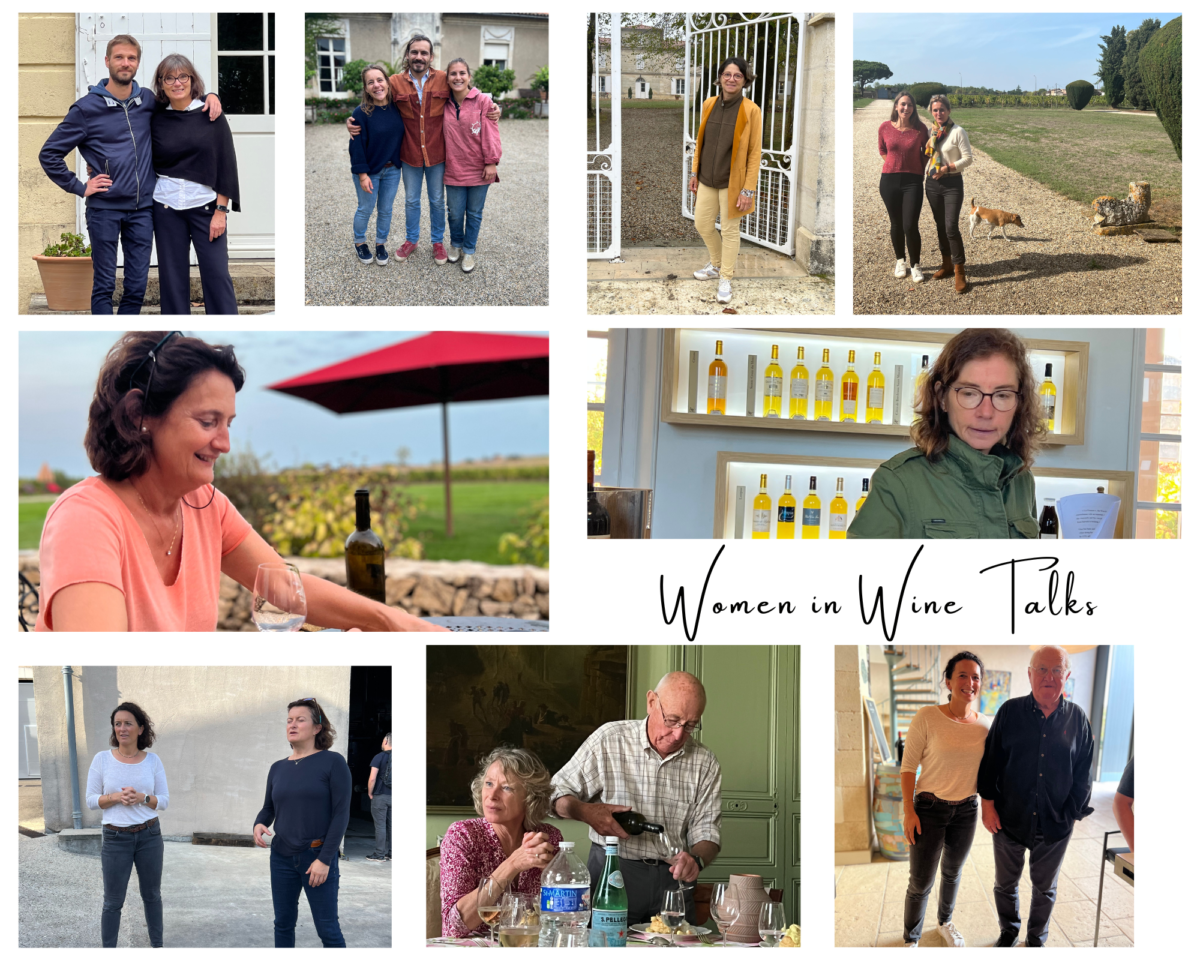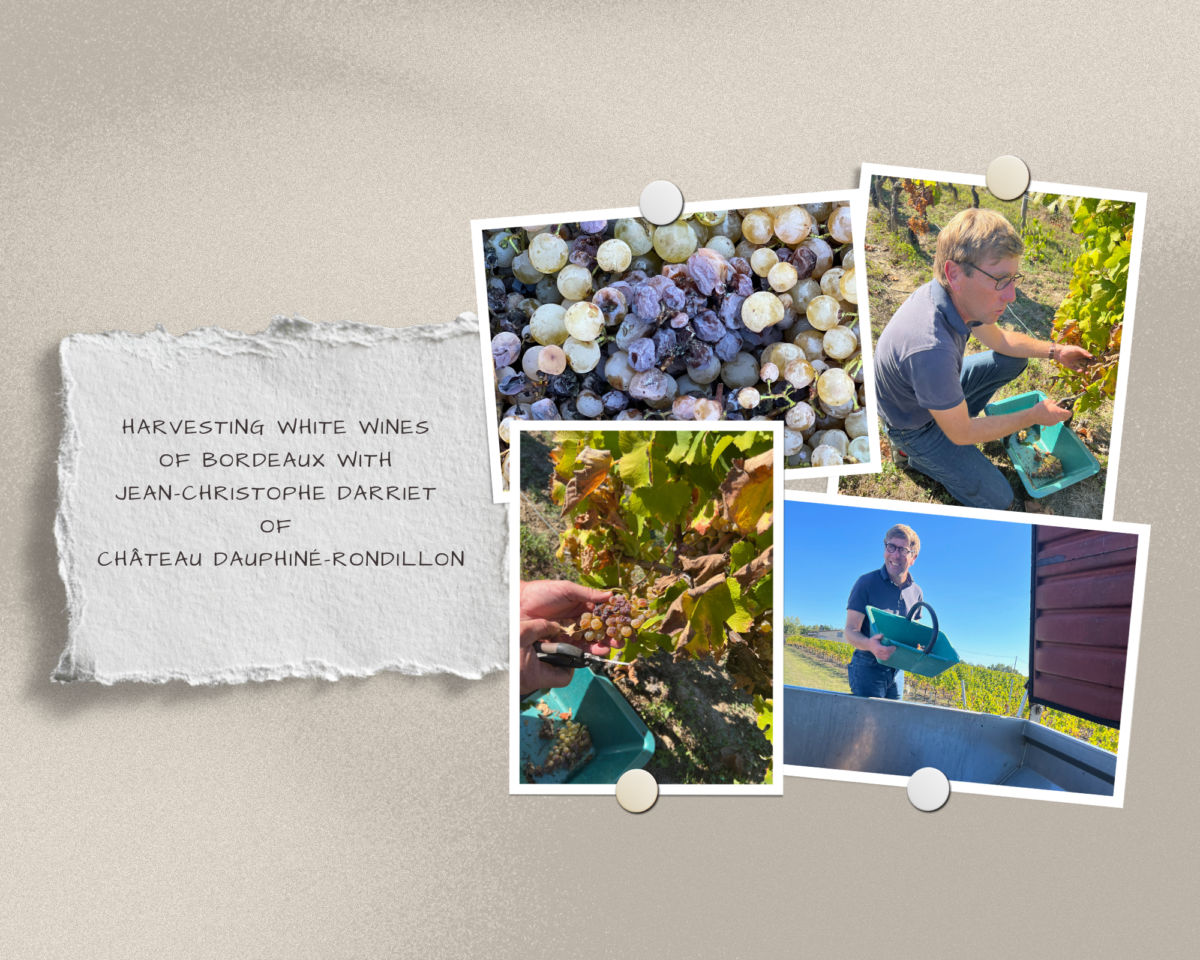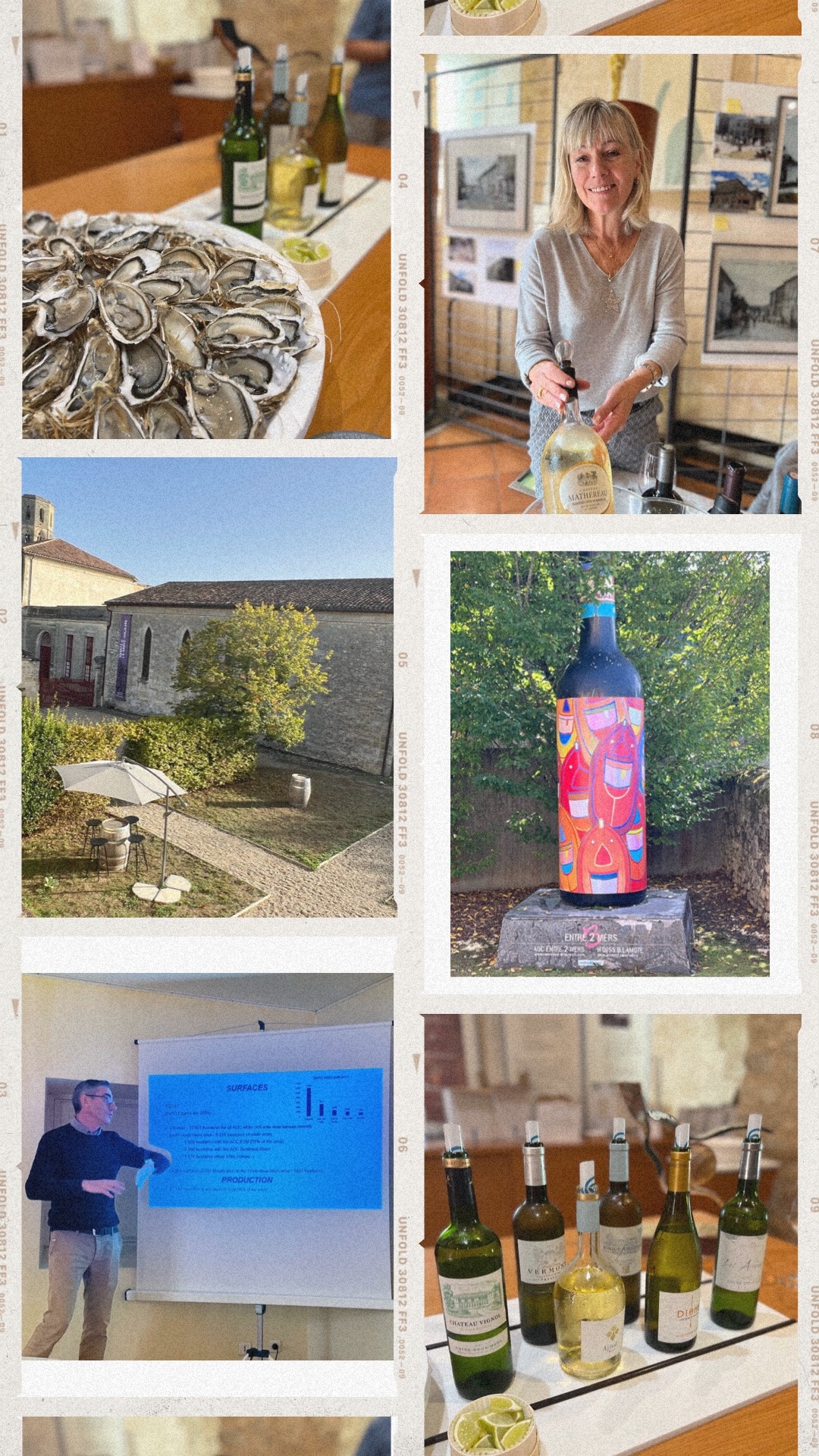“Where good things come from a smaller 1er Cru Classe” Liz Palmer
On my recent trip to Bordeaux, I had the wonderful opportunity to meet and speak with Laure de Lambert Compeyrot. Laure is CEO of Château Sigalas Rabaud 1er Cru Classé 1855 Sauternes (Bommes), the 6th generation of Château Sigalas Rabaud.
Château Sigalas Rabaud has a 14-hectare vineyard which is the smallest of the premier crus and is a very close neighbor of Château Yquem. Located in the commune of Bomme, on a slope facing south, the vines grow on the famous “Sauternes Terrace” characterized by a clay bedrock, covered with a silico gravel soil deposited by the Garonne over 600,000 years ago. Their plantings are 85% Semillon and 14% Sauvignon Blanc and 1% Muscadelle, with the average vines being 45 years old.
Château Sigalas Rabaud produces an extraordinary elegant and delicate Sauternes whose structure is 90% Sémillon and 10% Sauvignon Blanc, stored for 18 months in French oak barrels, with > 120g/L sugar.
This great terroir also produces excellent dry white wines. What stood out for me was the Sémillante de Sigalas. Made from older Sémillon vines, it is a single varietal, aged 8 months in French oak barrels, with > 5 g/L sugar. This wine was made without sulfur and produced on the same terroir as the 1st Grand Cru Classé, making it even more special.
The property features a beautiful 17th-century Chartreuse with five elegant guest rooms. When I stepped out onto the terrace, I found stunning views of neighboring chateaux. The lounge and dining room have a real family feel, with an elegant mix of traditional and eclectic furniture and design. I was thrilled to find that Château Sigalas Rabaud received a 2022 Best of Wine Tourism Award on accommodation, and I can see why – what a stunning property.
Laure de Lambert Compeyrot
I finally get a chance to speak with Laure de Lambert Compeyrot about her start in the industry and other interesting facts about her. The content has been edited for clarity.
Château Sigalas Rabaud has been under the management of sixth-generation Laure de Lambert Compeyrot since 2006 who has given the property a huge lift. Laure officially became CEO in 2013. Her winemaking studies were at the School of Oenology of Bordeaux, although her position has shifted from winemaker and management to CEO she has a deep passion for the vineyard and the Chateaux.
While we were walking towards the vineyards, Laure explained how she is working with other neighboring Grands Crus Classés châteaux, to develop wine tourism in the Sauternes region. She was elected President of Route des Vins en Graves et Sauternes in 2021. The association has over 150 members which include wine estates, chateaus, restaurants, hotels, and other properties. Laure is hands-on “I love to be in the vineyard, to check on the vines, I like to decide the day of harvest, for me that’s very important.” As we walk through the vineyards Laure tells me that she is “aware of the importance of respecting the terroir and its ecosystem.”
Once back on the terrace Laure and I sit down to continue the discussion with some wine and cheese. It was a lovely view watching the sun go down and seeing the twinkling lights from the neighboring chateaux…
Liz: Who is Laure de Lambert Compeyrot and tell us about your history?
Laure: laughs and says I “was born in a barrel” literally. My mother and father are both from Pomerol and were in the wine business. My grandfather used to go out with me looking botrytis – I learned a lot of things from both grandfathers when I was young. I was exposed to vineyard work back then.
I worked in the Louvre, Paris in furniture – I loved my work. After I had my children, I came back to work. My husband is a banker, so we moved often like Toulouse and other locations.
In 2003 my father (Gérard, Marquis de Lambert des Granges) asked his children if someone would go to Montreal, Canada and I did. I felt it was luck and I presented the 2001 in Montreal and I felt proud. I decided to go back to school to study winemaking, it was difficult but so interesting. I got an internship (in the family estate) in 2005. My teenage children supported me in going back to school and for me, it was necessary to be successful in my studies for my children. I couldn’t fail.
“It’s important to take the risk by yourself”
Liz: Can you tell us what changes you have made since becoming CEO and what future plans you have?
Laure: Since becoming CEO, the first thing I changed is the tractor (laughs). I also wanted the estate to be bio, it was a good idea. I also changed a lot of things in the vineyard and the cellar.
I also decided to organize agrotourism, so I invited a specialist (to study how it would work).
I have become successful with (wine) tourism, we have 57 % French guests, 20 % are local from Bordeaux, with the other 43% are from USA, Belgium and UK.
Another change I made is linking with the neighbors, you must speak with them and be with them and learn how we can all work together. I like to create links! I am also the President of the Route des Vins en Graves et Sauternes.
“You are a révolutionnaire” my father’s friends have told me
Liz: Who has been your mentor in the industry?
Laure: I have two of them – the first one is a friend of my father and a big owner of Bordeaux of Medoc. In 2009 we were having dinner with my father and he said to my father its time for your daughter to become CEO. He showed me so much…he took my hand. I had the code – because I’m from an old family. The second one is a true artist Eric Boissenot who is an oenologist.
Liz: If you weren’t the CEO of Château Sigalas Rabaud, what would you be doing?
Laure: A lot of things….. maybe a painter, or something with my husband, maybe in Cambodia working in agriculture….
Liz: In your personal wine collection, what would we find?
Laure: Including historic family wines, I also collect a lot of wines from Napa, California.
Liz: What is your favorite food and wine pairing?
Laure: I have so many …. Sauternes 2016 with Roquefort cheese.
This ends our conversation and as we enjoy our glass of Chateau Sigalas Rabaud 2006 [Sauternes] and Roquefort cheese.
To learn more about Laure de Lambert Compeyrot and Château Sigalas Rabaud please visit ttps://www.chateau-sigalas-rabaud.com/
This interview is part of “Women in Wine Talk” series, our continuing effort to highlight winemakers, sustainable specialists, executives, and others making a positive impact in the world of wine.
@charmeu_usa @charmeu_canada and @vinsblancsdebordeaux_usa #enjoyitsfromeurope #euAgriPromo #MadeintheEU #thecharmingtasteofeu #charmeu #bordeauxwine #bordeauxwinelover #madeinfrance #wine #winelover #travelling #traveldiaries #winelife #winetourism #womeninwine #womenwinemakers #womeninwinebusiness #femmesdevin #awardwinning #wine #sweetwine #whitewine #ChâteauSigalasRabaud #PremierCruClassé #sauternes

